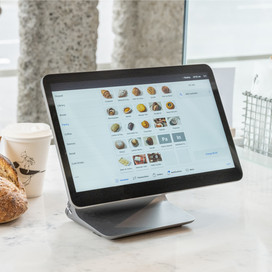Table of contents
With post-pandemic reverberations and economic shifts being felt in the retail world, pop-up shops are a way for brands to stay fresh, offer in-person experiences, and reach a wider audience. Inflationary pressures mean consumers are more careful about spending their money. Shoppers want accessible prices, tangible experiences, and a way to cut the clutter – pop-up shops enable you to deliver on all three. So let’s take a look at just how to pull off the much-acclaimed pop-up shop.
Strategise for pop-up success
Set kickable goals
Pop-up shops are short-term retail offerings that could run for a few days or a few months. Begin by determining the purpose of your pop-up shop. Do you need to generate sales, increase brand awareness, launch a new product, or engage with a specific target audience? It’s also the time to get pointy about what value you’re bringing to customers – why should they visit your pop-up rather than the ease of shopping online?
Location, location, location
Many areas, both metropolitan and regional, have experienced a real-estate shake-up over the past few years and are finding ways to fill empty commercial spaces and reinvigorate shopping neighbourhoods. For instance, Brisbane City Council is helping to facilitate those looking for and offering space for pop ups. Similarly, Melbourne’s Shopfront Activation Program has brought life to unused spaces. And platforms like Spacely allow you to search pop-up spaces all around Australia.
Play with your budget
Pop ups allow you to set up trade for a low upfront cost. You can often choose between short-term leases or a one-off multi-day opportunity, like during a festival or other special occasion (think Mardi Gras in Sydney). Or, low seasons like wintertime in a beachside town, are an opportunity to score cheaper rent. Determine your budget for rent, inventory, staffing, and marketing. How how can you borrow and hire equipment that you’ll use for a short period of time?
Generate pop-up hype
Getting the word out that your pop-up shop is coming (and then open!) is half the game. You need to make it intriguing and wide-reaching to get as many potential customers as possible into your shop for the short time it’s open.
Art of the tease
Leverage social media platforms to create buzz about your pop-up shop. Share engaging content, teasers, and exclusive in-store offers in a count-down style to attract potential customers.
Go analogue and paste up posters in the local area, leaving flyers at nearby cafes with like-audiences to your own letting folks know your pop-up is coming. Use creative signage, vibrant displays, and unique window decorations to build curiosity.
Takes a village
Consider collaborating with local businesses and like-minded brands to leverage their social proof, cross-promote your businesses and expand your reach.
Flaunt your expertise
Host events, workshops, or meet-the-maker sessions that are related to your product or industry to generate word of mouth and interest beyond shopping alone.
Create a magical pop-up experience
Consider how you can wow customers in-person, bringing your brand and products to life with personable interactions and sensory experiences.
Build staff excitement
As well as training your staff to provide attentive and personalised customer service, running a pop up is an opportunity to offer your staff a fun experience too. Working together as a team on something new is a way to generate atmospheric excitement from within the business. Pop-ups can be fast-paced environments – make sure your payment tech is running smoothly with Square for Retail.
Get physical
Encourage customers to interact with your products through demos, samples, or trial sessions. For instance, if you sell camping equipment, do an epic hot chocolate recipe demo with samplers, or run a tent set-up race. This hands-on experience increases engagement and often reflects in more sales.
Engage the senses
Creating interactive elements, and sensory experiences that align with your brand and product offering can help customers relax and engage with your products. Use touch, taste, visual elements, sound and smell to create memorable experiences you can’t get online.
Capturing pop-up contacts
Don’t miss the opportunity to nurture new customer relationships and amplify future marketing efforts.
The power of exclusivity
Build your database and gather the email addresses of folks that visit your pop-up by offering special incentives such as exclusive discounts. Drive traffic to your online store by giving your pop-up store shoppers early access to new products. Use in-store signage and QR codes to make it clear your promotion is pop-up only.
Giveaway as a gift
Thank your new customers for visiting! Run a giveaway where customers provide their contact details for a chance to win. Ensure the prize is relevant to your brand and encourages participation, like sharing photos of their in-store experiences or involving their friends. Offer a discount for non-winners to say thank you.
Square Marketing allows you to continue to engage your new customers beyond a one-time experience though integrated email marketing software, and make your pop-up pay off for years to come.
![]()











